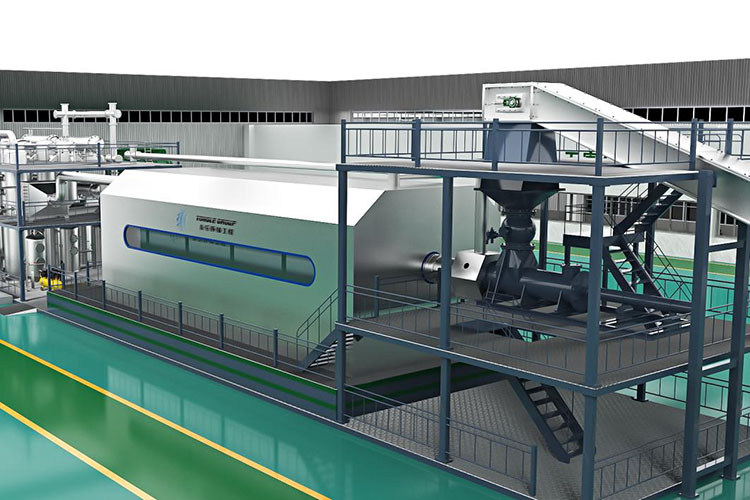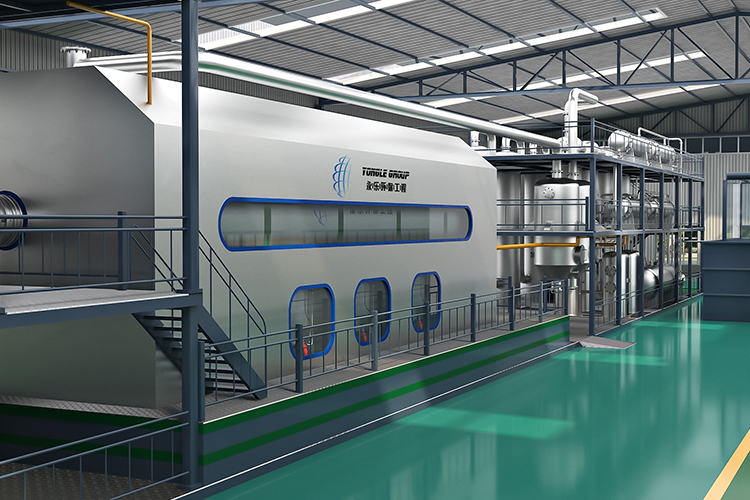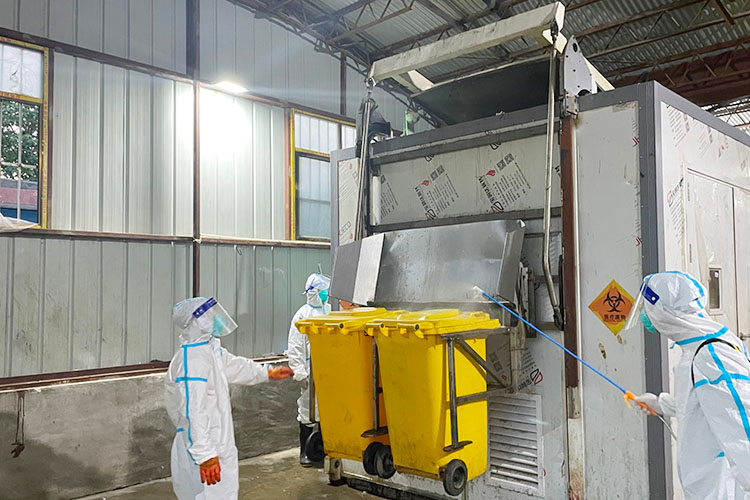Under the increasing demand for waste disposal in medical institutions, the selection of medical waste disposal equipment is crucial. Currently, medical waste treatment technology not only requires high efficiency and safety, but also needs to comply with environmental standards to achieve harmless treatment of medical waste. Especially equipment capable of synchronously processing the five major categories of medical waste has become an important trend in the industry's development. Medical waste is mainly divided into five categories: infectious waste (such as gauze, bandages, etc. contaminated with pathogens), pathological waste (human tissues, organs, etc.), damaging waste (sharp tools such as injection needles and surgical knives), pharmaceutical waste (expired or discarded drugs, vaccines, etc.), and chemical waste (chemicals such as laboratory reagents and disinfectants). Due to the high pollution and hazard of these wastes, traditional single treatment methods are difficult to meet the needs of modern hospitals and medical institutions. Therefore, the ability to simultaneously process the five major categories of medical waste equipment has become a breakthrough in the medical waste treatment industry.

The medical waste treatment equipment adopts comprehensive technologies such as high-temperature pyrolysis, plasma, microwave disinfection, etc., which can achieve synchronous treatment of five categories of medical waste without classification, greatly improving treatment efficiency and reducing manual operation risks. At present, the most common medical waste treatment equipment on the market adopts high-temperature pyrolysis incineration technology, which can completely decompose medical waste at temperatures above 800 ℃, avoiding secondary pollution. High temperature treatment not only effectively sterilizes, but also reduces waste volume and minimizes landfill demand. Medical waste treatment equipment is equipped with an efficient flue gas purification system, including multiple environmental protection technologies such as deacidification, dust removal, and activated carbon adsorption, to ensure that exhaust emissions meet national standards. In addition, some devices can also recover heat energy, reduce energy consumption, and achieve green and sustainable development.

The new generation of medical waste treatment equipment adopts an intelligent control system that supports remote monitoring, data recording, automatic diagnosis, and other functions, reducing the risk of direct contact between operators and medical waste and improving work efficiency. Whether it is large hospitals, clinics, biological laboratories, or pharmaceutical companies, modern medical waste treatment equipment can adapt to the waste treatment needs of different scenarios and can flexibly adjust the operating mode according to the processing capacity. With increasingly strict environmental policies, medical institutions' requirements for medical waste treatment equipment are also constantly increasing. In the future, devices will become more intelligent, environmentally friendly, and develop towards modularity and miniaturization to meet the needs of medical institutions of different scales. Meanwhile, with the maturity of synchronous treatment technology for the five major categories of medical waste, the efficiency of equipment processing will be further improved to ensure the harmless and resourceful utilization of medical waste.

Choosing efficient, safe, and environmentally friendly medical waste treatment equipment is a common goal of medical institutions and environmental protection enterprises. Equipment using high-temperature pyrolysis incineration, intelligent control and other technologies can not only achieve synchronous treatment of five major categories of medical waste, improve treatment efficiency, but also ensure environmental safety and comply with national emission standards. With the continuous advancement of technology, medical waste treatment equipment will play a more important role in the future, providing strong support for the sustainable development of the medical industry.
Yongle Environmental Protection is mainly engaged in the research and development, production and sales of complete sets of technical equipment for organic solid waste disposal and comprehensive utilization. Production and manufacturing, domestic waste treatment equipment, tire pyrolysis equipment, medical waste disposal equipment, hazardous waste disposal equipment, and achieve efficient and comprehensive utilization of resources through independently developed low-temperature anaerobic pyrolysis equipment technology solutions.
Tags:Advantages of synchronous processing of five major categories of medical waste treatment equipment,medical waste treatment equipment,YONGLE GROUP
 Latest news
Latest news


























